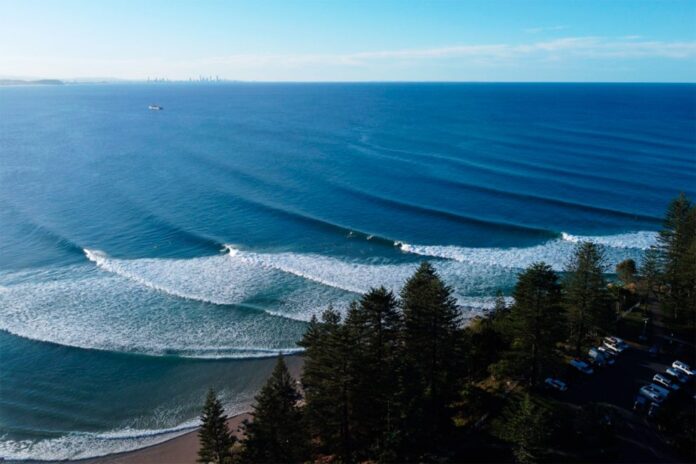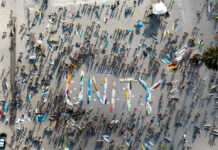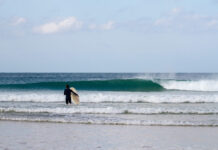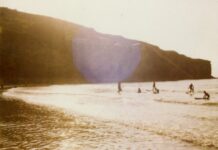Nowadays, replicating the natural flow of sand that the rock walls on either side of the Tweed River interrupt guides Bowra’s decision-making.
“When we talk about “natural rate”, that’s really important. In a natural setting the sand is moving up in a certain regime. It’s going from south to north but periodically when there’s high energy events, ex-tropical cyclone swells hitting the coast, you see those rates really ramp up. Under calmer conditions like through our winter months when it’s quite subdued, the sand is still moving, but at a much slower rate. Our systems were set up to try and replicate that process as best as they could. Of course you’re never going to be able to replicate what Mother Nature does down to a tee, but it’s designed and meant to be operated in a sense that if sand’s arriving at the jetty, then we’re pumping. We don’t want to be moving sand in big sporadic quantities – that’s not meeting that natural rate of sand supply. That was one of the big lessons learned of this project in the early days. Because this area had experienced such destructive high-energy weather and swell events in the 60s and 70s, when the project was incepted Queensland were adamant that too much sand will never be enough. Lo-and-behold, what followed were a few decades of quite calm periods with no real significant back-to-back East Coast lows or ex-tropical cyclones battering the coast, so all the sand that was removed from the Tweed River via dredging and deposited on the other side just sat there building up on the beaches. This goes back to that natural rate thing – that’s not consistent with a natural rate it’s just a big swath of sand thrown into the receiving environment in one big hit. To give you some numbers around that, it equated to about fourteen years worth of sand supply, delivered in the space of about 3-4 years, injected straight into what is quite a sheltered bay. When you look at the orientation of the coast, from Snapper up to Southern Tugun, it’s basically one big bay. The currents and the sweep moving through is pretty full on, but if you’re putting that volume of sand in an area, it’s quite artificial. That’s what saw basically the demise of Kirra as a surf break through the late 90s and into the early 2000s.”
Whilst Bowra’s job doesn’t have any specific reference to what he terms “surfing amenity”, how, where and when they deliver sand has a huge impact on the pointbreaks of the Southern Gold Coast. And he and most of the team are either surfers or have a real passion for the coastal environment and lifestyle this area affords, so it is something that they’re very aware of.
“There’s a lot of misinformation out there about why Kirra broke the way it did. There’s no denying that it broke bloody brilliantly in its heyday through the 70s, 80s and 90s, but that situation that was a confluence of factors around a lack of sand supply and a lot of successive erosion events so that the full bedrock of Kirra Point was exposed, giving rise to this peeling pointbreak that had just the right angle for the swells that are persistent in this area of the world. Whereas nowadays, because the sand supply has been reinstated, it’s a bit more back to a normal state of affairs. It’s not like we’re going to starve the southern Gold Coast beaches of sand again and allow the beach at Kirra to retreat right back to where that control line was around where the sea wall is and all these foreshore works that have happened. For Kirra to return to what it was in the 70s, 80s and 90s would mean completely switching the system off, severing the sand supply once again. However, in saying that, what we are starting to see in recent years is a realignment of Kirra, slowly but surely, as stubborn as that bank is, she is realigning. We watch, closely.”
Surfing, and the great waves that so many of us focus on, is collateral benefit as far as this project is concerned, I realise. “How do those twin objectives of reinstating sand supply at a natural rate to southern Gold Coast beaches and ensuring that there’s a safe navigable channel at all times for the Tweed River balance one another?” I ask him. I’m curious whether the importance of river traffic has diminished or is the Tweed still important for fishing and sea freight, versus the economic amenity of the surf breaks? Originally the sand supply was about protecting property, infrastructure and economic benefits of tourism, but now that the beaches have been reinstated I’m curious whether optimising surf benefits has developed in importance for the project because of the economic value of surfing to the area?
“If you’re going to look at it in black and white in terms of legislation, they both are as important as one another – there’s not a case of one being more important at one time of the year and vice versa. In saying that, political pressures and community pressures have obviously influenced the focus of those objectives over time.”
Bowra goes on to explain: “Up until 2008, high volume pumping and high volume dredging were occurring each and every year, with quite large quantities [all available to see on the project’s website archives]. What it gave rise to, going back to the question about whether the initial objectives have swayed disproportionately one way or the other over time, is that up until 2008 Queensland had their firm focus around sand supply, and New South Wales were pretty keen to maintain the entrance to the river. That navigability demand was well and truly being upheld because of the dredging every year, but with the beaches being impacted the way they were, they were in this unnatural state where they were just so wide. There’s all these anecdotes of people joking that they had to take a packed lunch to get to the water’s edge. That led the governments to rethink what they were doing with respect to sand supply, which comes back to that natural rate.”
There was an active decision made in 2008 to put a hiatus on dredging and let the southern Gold Coast beaches recover to a more natural state. The natural rate of sand supply up this coast is around the 500,000m3 mark (plus or minus a few thousand, depending on the weather conditions). That figure is a long-term average, which is backed up by a lot of scientific analysis and studies that the team working on the TRESBP undertake every five years both out of professional interest and as required by the legislation.
A dredge vessel has the capacity to relocate 200,000m3 of sand over the course of a couple of weeks, compared to 500,000m3 that moves naturally over twelve months. This is what Bowra refers to as ‘lumpy” delivery. You can’t have a dredge vessel parked off the coast for a whole year delivering small quantities in line with the natural rates because it’s not economically feasible.





